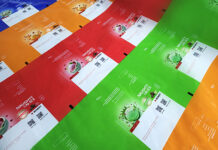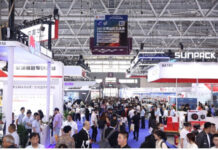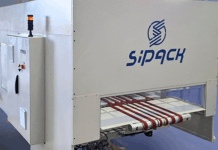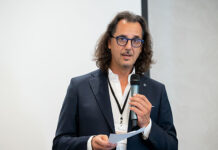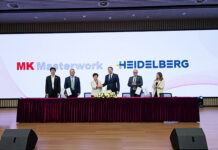During the inauguration of the new SOMA Experience Centre in Carmignano di Brenta, Sun Chemical presented its global strategy to guide the packaging industry towards a sustainable future. Not just a vision, but a true industrial mission based on technological innovation, regulatory responsibility, and collaboration across the entire value chain
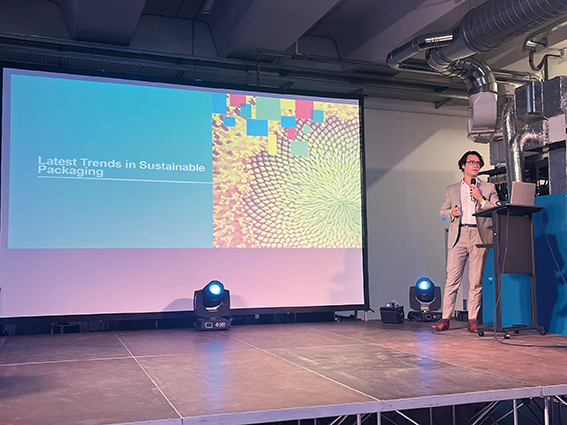
Sun Chemical’s vision to provide the printing and packaging converting market with sustainable solutions and products is built on a multilayered approach.
This spans from product technology to regulatory compliance, and extends to collaboration along the entire supply chain, demonstrated by the numerous partnerships the group has established with key industry players. The goal is to chart a path rooted in chemical innovation, extended producer responsibility, and circularity.
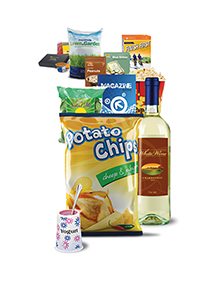 During his address, Mattia Fontani, Development Technician specializing in WB products and innovation at Sun Chemical, immediately clarified the core of the matter: “sustainability is no longer a choice; it has become a concrete and essential strategy for the entire packaging system”. A statement that is confirmed by global trends and consumers’ growing environmental awareness, as well as by increasingly stringent regulations, such as those related to Extended Producer Responsibility (EPR), which require brands to fully assume responsibility for the lifecycle of their packaging.
During his address, Mattia Fontani, Development Technician specializing in WB products and innovation at Sun Chemical, immediately clarified the core of the matter: “sustainability is no longer a choice; it has become a concrete and essential strategy for the entire packaging system”. A statement that is confirmed by global trends and consumers’ growing environmental awareness, as well as by increasingly stringent regulations, such as those related to Extended Producer Responsibility (EPR), which require brands to fully assume responsibility for the lifecycle of their packaging.
To tackle this transformation, Sun Chemical promotes a holistic, multilayered approach: from the development of innovative chemical solutions to reduction of environmental impact of its production sites; from regulatory compliance to supply chain co-creation; up to the definition of concrete tools for a real, measurable, and shared transition.
A regulatory task force to orient oneself in the process of change
One of the most innovative aspects of Sun Chemical is the creation within of a regulatory task force composed of specialists whose role is to monitor, interpret, and anticipate legislative developments at European and international levels.
This working group supports converters, brand owners, and stakeholders in understanding and proactively adopting sustainability and circularity requirements, helping them integrate EPR principles and other rules and directives into a long-term vision. This is a concrete example of how sustainability is addressed not only from a technical perspective but also from a cultural and strategic one.
Supply chain co-creation and product innovation
Sustainability must be built together and that’s why Sun Chemical consistently invests in dialogue with customers, suppliers, and associations, creating collaborative ecosystems capable of generating real innovation.
It is no coincidence that the company is actively involved in networks such as CEFLEX and Science-Based Targets, contributing to the definition of shared standards and scientifically measurable emission reduction goals by 2030.
At the same time, Sun Chemical has implemented an industrial efficiency program that has already led to reduced emissions, lower water consumption, and improved environmental impact across several production sites, fully aligned with ESG objectives.
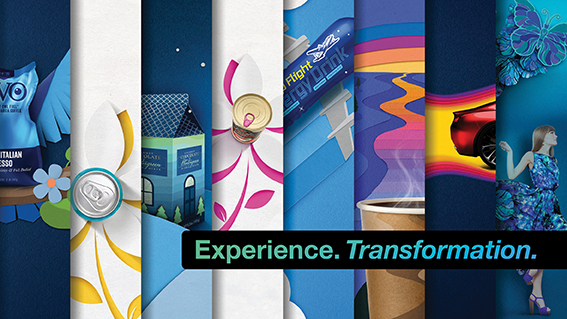
The strength of Research & Development: Aqualam and water-based solutions
One of the cornerstones of Sun Chemical’s approach is its constant commitment to Research & Innovation. With centers of excellence in Italy, UK, and the United States, the company develops advanced formulations capable of meeting the strictest regulatory requirements as well as the technical demands of modern production.
During the demonstration at the SOMA Experience Centre, special focus was placed on the Aqualam range, water-based inks designed for reverse printing on flexible films. These products not only guarantee high printing speed, excellent color performance, and mechanical resistance, but also significantly reduce environmental impact: between 18% and 20% fewer VOC and CO2 emissions compared to solvent-based inks.
The latest version of the Aqualam series, in particular, represents the most advanced evolution of the range. It is compatible with solvent-free adhesives with low monomeric isocyanate content (ULM) and is ideal for retort structures, where quality and sustainability must go hand in hand.
The 5R method: an applied philosophy
The transition to a circular economy is not just a slogan, it is a method. Sun Chemical applies it through the 5R philosophy: Reduce, Reuse, Recycle, Renew, and Reinforce Responsibility. Every product undergoes a rigorous Life Cycle Assessment (LCA), evaluated according to dual compliance criteria, compliance with both current and future regulations and is designed to reduce environmental impact starting from the formulation stage.
A practical demonstration of this approach’s effectiveness came directly at the SOMA Experience Centre, where converters in attendance were able to observe the performance of Aqualam inks under real printing conditions, appreciating their efficiency and adaptability to different substrates.
Certifications, partnerships, and leadership in sustainability
Sun Chemical has been awarded the EcoVadis Silver certification, one of the most internationally recognized standards for evaluating ESG performance, with more than 85% of its suppliers exceeding the minimum sustainability score (45/100).
The company also collaborates with organizations such as Qualvis in developing compostable and low-migration packaging, helping promote monomaterial solutions that are easier to recycle.
A future to build together
The presentation concluded with a clear and positive message: “sustainability is not a cost, but a concrete opportunity to create value across the entire packaging value chain”. With tangible tools, consolidated technical know-how, and a long-term industrial vision, Sun Chemical positions itself as both a partner and an enabler of real change, where innovation and responsibility go hand in hand.
In this sense, the new SOMA Experience Centre served as the ideal stage to showcase a collaborative model in action: technology, sustainable chemistry, and co-creation as key drivers in building the future of packaging.






